This new charcoal comes from the same folks who brought us the Highly Recommended Nature's Mesquite charcoal. Thus we had high expectations for it, so let's see how it did.
Upon opening the bag, we were a bit disappointed to see that nearly half the bag is comprised of some very large chunks of wood. You can break these chunks up into more usable pieces, but you generate a fair amount of chips and fines in doing so. The bag contained an average amount of chips and dust. We opened a second bag and found an even larger percentage of the bag being comprised of the very large chunks. The chips and dust were also somewhat greater in the second bag. Here's the breakdown on the first bag we opened:
| Large |
3.0 pounds |
44.4% |
| Medium |
1.5 pounds |
22.4% |
| Small |
1.4 pounds |
21.6% |
| Chips/Dust |
0.8 pounds |
11.5% |
|
|
|
| Total |
6.7 pounds |
|
|
The bags contained no scrap, but one bag did contain a piece of rusty scrap metal. You can see it in the photo down below.
The charcoal was quite difficult to light, requiring 5.5 sheets of newspaper in our chimney starter test which places it at the high end of our scale. The charcoal has a very mild and pleasant soft of perfumey smell to it as it burned, similar to most charcoals that come to us from south of the border. As the charcoal burned in the chimney starter, we noted that it sparks quite a lot. More about that in a minute.
In our maximum temperature test, we dump the lit charcoal from our starting test into a medium Big Green Egg, and then add more charcoal to fill the fire bowl. We then open the vents and let it rip. The charcoal sparked like crazy. We haven't seen sparks like this since we tested Kingsford Charwood. We had sparks shooting out of the bottom vent, landing as far as 7 feet from the cooker. It even sparked like crazy when we opened the dome and closed the bottom vent. This is more or less how it would behave in an open grill for grilling. Here you can see some photos of the sparking:
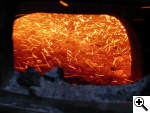
The view into the lower vent of our cooker.
|
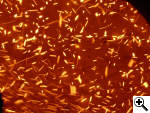
A closeup looking into the bottom vent. Look at all the black bits flying around in there!
|
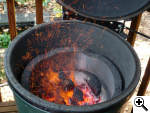
The sparks flew even with the bottom vent closed and the dome open, as one would use an open grill.
|
There was a very slight breeze during this test, and we soon noticed that everything down-breeze from the cooker was slowly getting covered with a gritty ash. This behavior was also very similar to what we observed with the Kingsford Charwood.
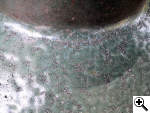
Gritty ash collecting on top of our cooker.
|
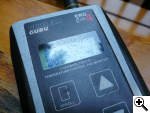
Ash that landed about 4 feet from the cooker.
|
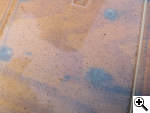
Ash that landed about 10 feet from the cooker!!
|
Next we have the burn time test. We use a MAPP torch to start the charcoal for the burn time and ash production tests, and this is when we observe the lighting characteristics with MAPP. We always give the standard warning to take care when using MAPP to start a charcoal fire since there is usually a lot of sparking and popping. With this charcoal, would implore you NEVER to use a MAPP torch. The sparking and popping was downright dangerous. We had a small glowing chip about the size of a man's small fingernail pop out of the cooker and onto the deck. Sparks were everywhere, landing on our arms. It just isn't safe, so don't do it with this charcoal.
As for the burn time we observed, it was average when compared to other charcoals we have tested. The ash production was high compared to to other charcoals.
So, all in all this charcoal was pretty disappointing. The size distribution was a problem with the overly large chunks making it necessary to break it up with a hammer. The sparking problem renders this charcoal usable only for closed cookers at lower temperatures. The ash production was getting close to the upper limits of what he have observed in our testing, and the burn time just wasn't that impressive. And although we don't include price in our ratings, at $5.49 for 6.6 pounds, we would expect something better for the money. Thus this charcoal gets our Below Average rating.

